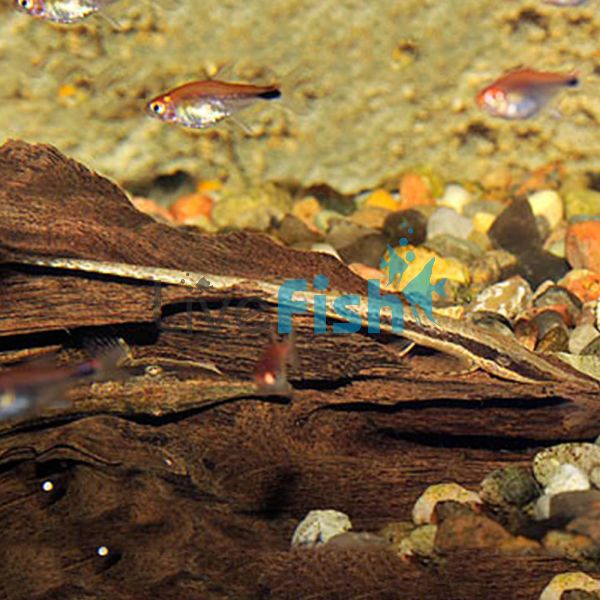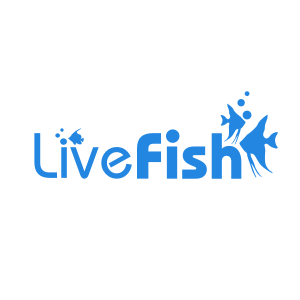Farlowella Catfish 5cm
For the catfish collectors out there or aquarists looking for a new and unique breeding project, the Farlowella catfish would be a perfect option. These fish make for a great alternative to bristlenose plecos and have the oddball flare to them as well with the unconventional body shape and came colours. They are relatively easy to breed but there is a niche and in-demand market for these fish hence their relatively high cost but the reward and satisfaction of breeding or keeping these elusive fish is absolutely worth it.
- Buy 5 for $28.17 each and save 10%
- Buy 10 for $25.04 each and save 20%
Farlowella Catfish
For the catfish collectors out there or aquarists looking for a new and unique breeding project, the Farlowella catfish would be a perfect option. These fish make for a great alternative to bristlenose plecos and have the oddball flare to them as well with the unconventional body shape and came colours. They are relatively easy to breed but there is a niche and in-demand market for these fish hence their relatively high cost but the reward and satisfaction of breeding or keeping these elusive fish is absolutely worth it.
Farlowella whiptail catfish is honestly one of the weirdest-looking species in the aquarium hobby. The easiest way to describe these fish is to just compare them to a wooden twig, their colour palette and long, slender body can easily be mistaken for some driftwood. Farlowella catfish have white a pronounced snout that tapers into the thin tail. The fins can sport filament link extensions on them. To go along with that, the farlowella whiptail catfish have a range of brown shades through the body but this generally aligns itself in horizontal stripes. The top of the body will be a light brown with darker scribbling, these transition into a darker coffee colour and returns back to the lighter shade. In the wild, these fish are found on decaying fallen branches in the river and this colour allows them to perfectly blend in.
Trying to find the males and females in this species is fairly easy. Males will have bristles on the side of their face which are referred to as a beard. The female will often lay a clutch of eggs right on the aquarium glass which the male guards until the eggs hatch. The eggs can be removed and artificially raised however most aquarists wait until the eggs hatch naturally and move the fry to a grow-out system. The habitat of the farlowella catfish in South America.
Tank Recommendations for your Farlowella Catfish
The farlowella catfish only needs a tank of around 75 liters as they are a fairly inactive species. Though the Farlowella whiptail can reach around 20 cm, their fins are probably 5-6 cm of this length. The best way to look at their care is by comparing them to a bristlenose pleco. A sand or gravel substrate is perfectly fine but most importantly they will love hiding areas around small pieces of driftwood, and rock caves and they will love a densely planted aquarium as well. This species is mostly active when the lights are turned off.
Suitable Tank Buddies
The Farlowella catfish is extremely peaceful with aggression only ever coming out during breeding between males but this is always harmless bickering. These reclusive species will get along with a wide range of community fish.
Usually Compatible
Tetras, gouramis, corydoras, angelfish, barbs dwarf cichlids such as rams, and large peaceful cichlids such as geophagus.
Sometime Compatible
Fin-nipping species like banded leporinus and small schools of tiger barbs should be avoided as they can make short work of the long fins on the Farlowella whiptail. This can lead to infection and unwanted stress for the catfish.
Rarely Compatible
Large aggressive species such as African cichlids and Jaguar cichlids. These species may try to eat the whiptail which could end in death for both fish. Because of the dense bone and armour plating the whiptail often gets lodged in the predator fish’s throat.
Feeding your Farlowella Catfish
Farlowella catfish will easily take to a wide range of food and are arguably one of the easiest fish to feed. They are regarded as ‘wood eaters’ meaning they can easily sustain themselves eating aquarium driftwood. The best type of wood is Malaysian bog wood as this is a softer type and breaks down fairly easily.
Do keep in mind that whiptails feeding exclusively on wood can lead to a lot of wood dust floating around in the water so some added mechanical filtration may be required. Aside from this they will eat algae and decaying plant matter but will also eat sinking aquarium foods like sinking pleco wafers. This can be supplemented with blanched veggies like zucchini and pumpkin.
| Scientific Name | Farlowella Catfish - Acus |
|---|---|
| Care Level | Easy |
| Common Names | farowalla catfish, Farlowella whiptails, twig catfish |
| Diet | Omnivore |
| Fish Family | Loricariidae |
| Lifespan (years) | 10 |
| Max. Length (cm) | 20 |
| Min. Tank Volume (l) | 70 Liters |
| Origin | South America |
| Reef Safe | Yes |
| Sociability | Peaceful |
| Venomous | No |
| Water Conditions | 24-26° C, pH 5.0-7.0 |




